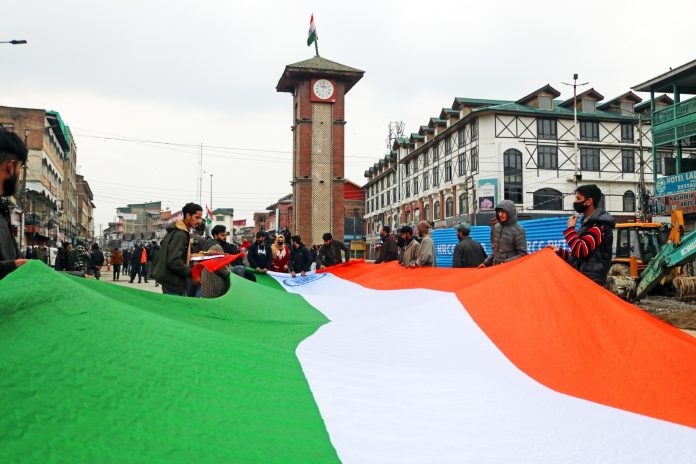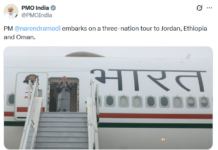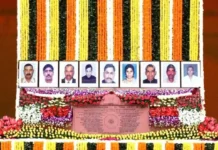
SRINAGAR: In the annals of history, some moments mark a paradigm shift, altering the course of a region’s destiny. The revocation of Article 370 by the Indian government on August 5, 2019, was one such moment for Jammu and Kashmir. Fast forward four years and the transformation that has taken place in the region is nothing short of remarkable.
The recent Tiranga Yatra, where hundreds of enthusiastic youths proudly waved the tricolour, symbolically shattered long-held misconceptions about the aspirations of Kashmiri youth. The tide of change has brought forth an era of peace, prosperity, and development, dispelling the shadows of militancy and strife that had clouded the valley for decades.
For years, the narrative of ‘Azadi’ had been skillfully propagated by Pakistan-sponsored proxies, leaving many to believe that the youth of Kashmir yearned for secession. However, the resounding chants of “Vande Bharat” and “Bharat Mata ki Jai” during the Tiranga Yatra in Srinagar laid bare the truth.
The youth, once lured by false promises, now stand united in their commitment to a prosperous and integrated Jammu and Kashmir within the Indian Union.
The path to this transformation has been arduous, marked by both political and economic reforms. The decision to abrogate Article 370 signalled the beginning of a new era. It dismantled the walls that had isolated Jammu and Kashmir, paving the way for unprecedented opportunities.
The region, once associated with unrest, strikes, and stone pelting, now basks in the glow of normalcy. Schools, colleges, and universities operate without disruption, a testament to the newfound stability.
One of the most remarkable achievements has been the restoration of tourism. The valley that witnessed over one crore tourists in 2022 stands as a testament to the appeal of peace and stability. Experts attribute this surge to the bold decision of August 5, 2019, which dispelled the clouds of uncertainty that had kept visitors at bay for years.
Economic rejuvenation has been at the forefront of the transformation. The New Industrial Policy 2021 has attracted investments worth Rs 2200 crores, creating over 10,000 jobs in just one year. Such an economic infusion had not been witnessed since 1947, a testimony to the newfound trust in the region’s potential.
Panchayat and block development council elections have witnessed enthusiastic participation, reflecting the growing engagement and empowerment of local communities.
Security too has witnessed a remarkable upswing. The crackdown on corruption, the elimination of top militant commanders, and the focus on generating employment opportunities have collectively weakened the insurgency’s grip. The loss of civilian lives has been minimized, signalling a shift toward a more stable and secure region.
The voices of detractors who had exploited the youth for their own ulterior motives have been rendered irrelevant. The conviction of youth like IAS officer Shah Faesal, who acknowledges the new reality, reflects the sentiments of a changing generation. The integration of Jammu and Kashmir with the rest of the country has transcended political and economic boundaries, solidifying the region’s place in the national fabric.
The Tiranga Yatra’s symbolism goes beyond mere spectacle. It underscores the journey from ‘Azadi’ to ‘Progress’ that the youth of Kashmir have chosen to embark upon. The myth of separatism has been unequivocally shattered, paving the way for a brighter future where the tricolour shines as a beacon of hope, unity, and development.
The past four years have been a testament to the power of visionary decisions, collective resolve, and the unwavering spirit of a people who have chosen to march forward toward a future of peace and prosperity. (ANI)
Also Read: Those opposing abrogation of Article 370 ignorant: Ghulam Nabi Azad






